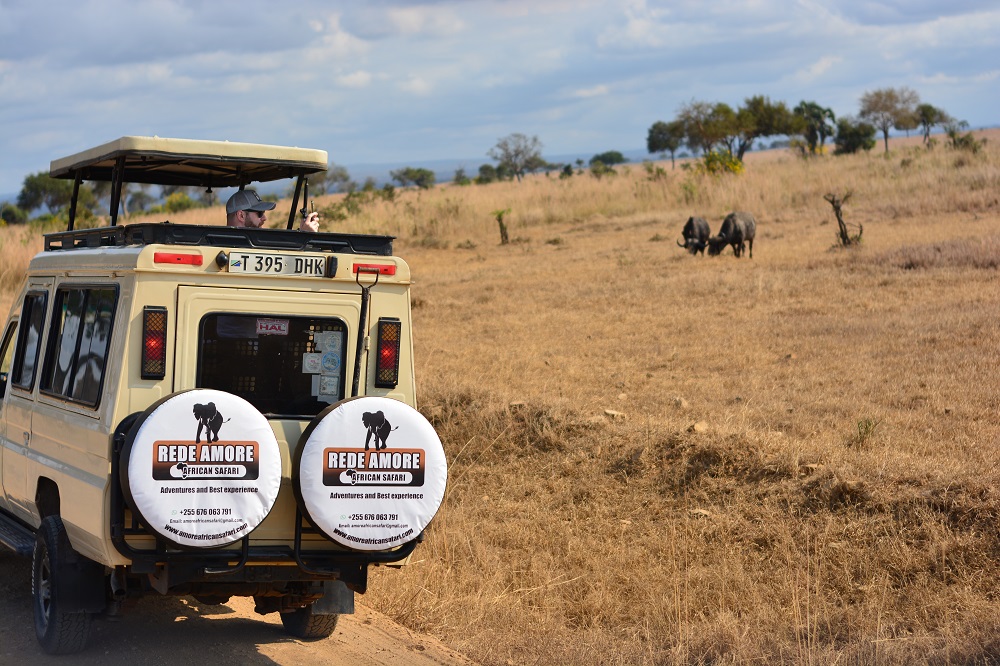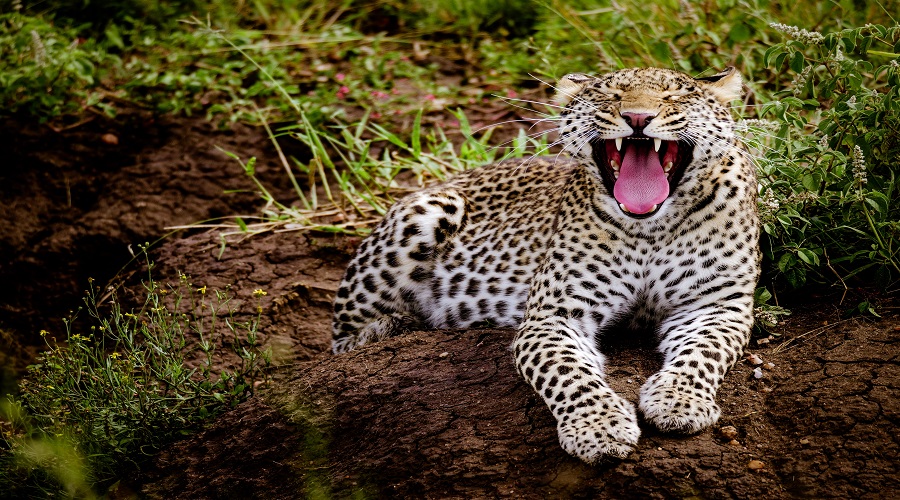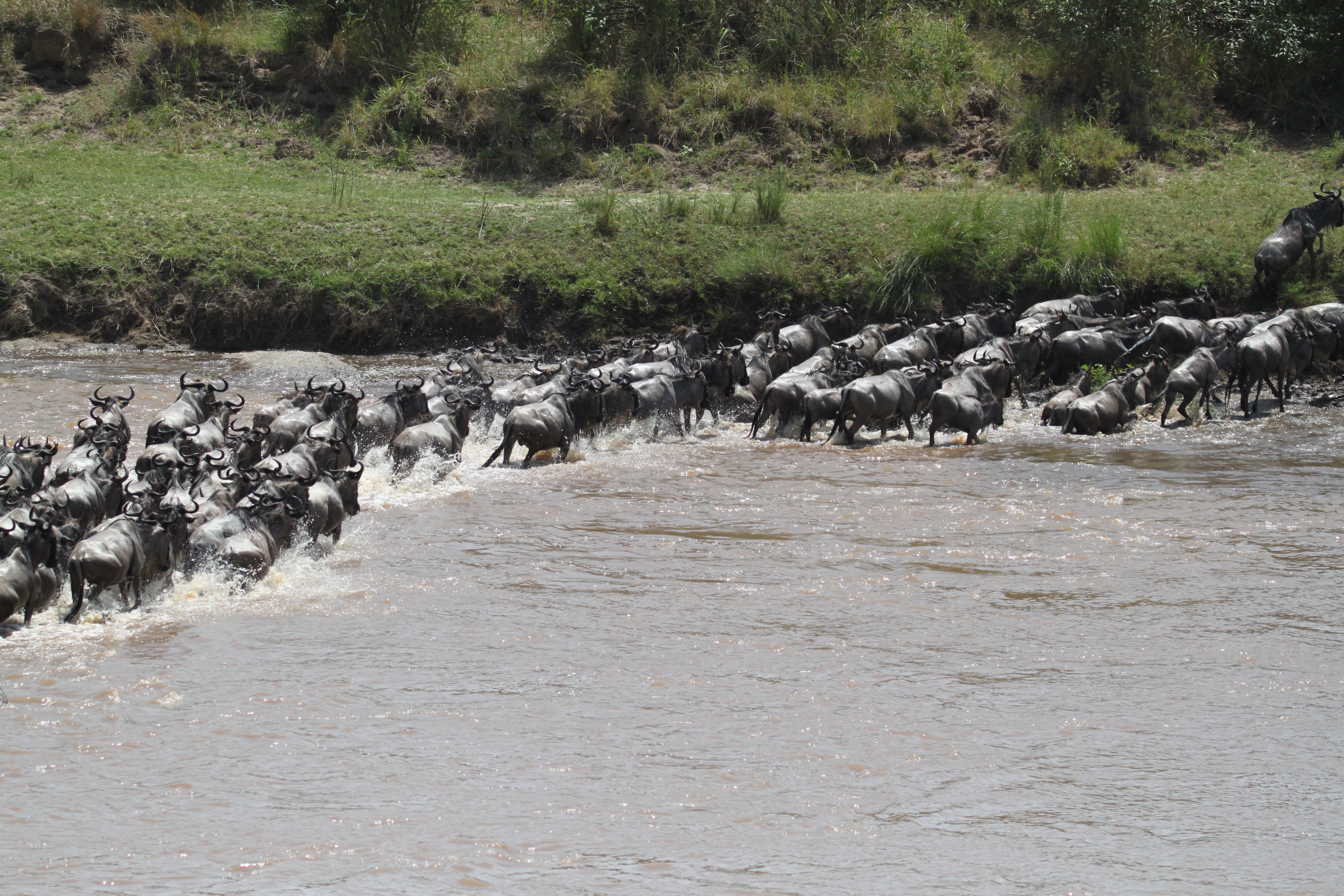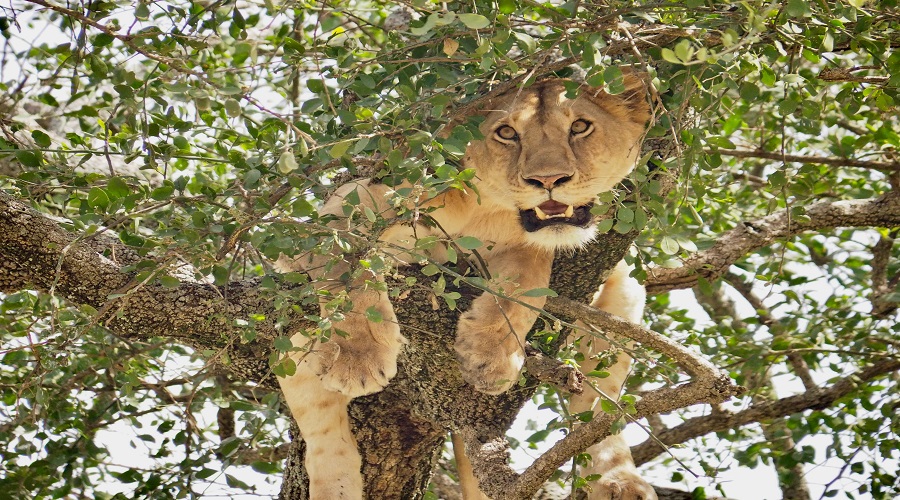
Best Tanzania Safaris for First-Time Travelers – All-Inclusive Safari Packages
Discover the best all-inclusive Tanzania safaris for first-time travelers. Enjoy wildlife, guided game drives, comfortable lodges, meals, and stress-free adventures
Customer Reviews
4.9
Best Tanzania Safaris for First-Time Travelers – All-Inclusive Safari Packages
Experience your first Tanzania safari with ease all-inclusive packages that cover accommodation, meals, guided safaris, and transportation.
Going on your first safari can feel exciting, but it may also seem a little confusing. Tanzania is one of the best places in the world for safaris. It has wide-open plains, amazing wildlife, and unforgettable landscapes. For first-time visitors, an all-inclusive safari package is the best way to enjoy everything without stress.

With our packages, everything is taken care of. From the moment you arrive at the airport until your last day in Tanzania, we handle your transport, accommodation, meals, park fees, and guided safari drives. You just need to focus on enjoying the adventure.
Why Tanzania is Perfect for First-Time Safaris
Tanzania is home to many world-famous parks and reserves:
1. Serengeti National Park
The Serengeti is Tanzania’s most famous park and one of the greatest wildlife destinations in the world. It’s a vast plain stretching over 14,000 square kilometers, home to thousands of animals roaming freely. The park is famous for the Great Migration, when millions of wildebeest, zebras, and gazelles move across the plains in search of fresh grazing. Watching predators like lions, cheetahs, and hyenas hunt during this migration is a once-in-a-lifetime experience.
Aside from the migration, the Serengeti is full of resident wildlife year-round: elephants, giraffes, buffalo, and hundreds of bird species. The park has endless open savannahs, rolling hills, and rivers where animals gather. Safari drives are easy to navigate, and it’s ideal for first-time travelers because wildlife is abundant and often easy to spot.

2. Ngorongoro Crater
Ngorongoro Crater is often called the “Eighth Wonder of the World.” It’s a massive volcanic crater about 20 kilometers across, surrounded by steep walls and filled with a dense concentration of wildlife. The crater floor is like a natural sanctuary, home to elephants, lions, rhinos, buffalo, zebras, wildebeest, and many antelope species.
It’s especially famous for black rhinos, which are rare in Tanzania and easier to spot here. The scenery is breathtaking wide grasslands, shallow lakes, and acacia trees make it a picture-perfect safari location. The crater’s compact size allows you to see a large variety of animals in a single day, making it ideal for first-time travelers who want a rich wildlife experience without long drives.
.jpg)
3. Tarangire National Park
Tarangire is known for its huge elephant herds and thousands of ancient baobab trees, which give the park a unique and magical landscape. It’s less crowded than Serengeti or Ngorongoro, which means you often feel like you have the park to yourself. During the dry season, wildlife gathers near the Tarangire River, making it one of the best places to see large groups of elephants and other animals close to the water.
Other animals include lions, leopards, giraffes, zebras, and many bird species. Tarangire’s landscape is varied open grasslands, riverine forests, and rolling hill so every game drive offers something different. It’s perfect for first-time travelers because the animals are easy to spot and the scenery is beautiful and photogenic.
.jpg)
4. Lake Manyara National Park
Lake Manyara is famous for its tree-climbing lions, a rare and fascinating behavior where lions rest in the branches of acacia trees. The park is also a birdwatcher’s paradise, with flamingos and thousands of other colorful birds visiting the lake. The mix of landscapes forested hills, savannah, and the alkaline lake itself creates a rich habitat for many species.
Other wildlife includes elephants, giraffes, hippos, buffalo, and monkeys. Lake Manyara is smaller than Serengeti or Tarangire, which makes it easy to explore in a half-day or full-day game drive. First-time travelers often find it exciting because of its unusual sights, including the possibility of spotting lions lounging in trees, which you won’t see anywhere else.

5. Southern Parks (Ruaha, Selous/Nyerere, Mikumi)
The southern parks are less crowded and more remote, offering a true wilderness experience.
- Ruaha National Park is Tanzania’s largest park, famous for its large elephant herds, lions, and rare African wild dogs. Its landscapes include rolling hills, dry riverbeds, and baobab forests.
- Nyerere National Park (Selous) is known for the Rufiji River, which offers boat safaris. You can see hippos, crocodiles, elephants, and a variety of birds. Walking safaris here are possible, giving a closer connection to nature.
- Mikumi National Park is smaller and easier to reach from Dar es Salaam. It’s great for first-time travelers who want to see giraffes, zebras, elephants, and lions without long travel.
These southern parks are ideal for travelers who want peace, quiet, and a more personal safari experience. They are perfect if you want to see wildlife in a less-touristy setting, enjoy walking safaris or boat trips, and feel completely immersed in Africa’s wild landscapes.
Some of our Perfect Tanzania Safari Itineraries for First-Time Travelers
4-Day First-Time Safari Itinerary (Short & Highlights Only)
This short safari is perfect for travelers with limited time who want to see Tanzania’s iconic wildlife. You start by arriving in Arusha or Kilimanjaro and heading to Tarangire or Lake Manyara for your first game drive, where you’ll spot elephants, giraffes, and colorful birds. The next day, you drive to Serengeti National Park, experiencing your first close encounters with lions, zebras, and wildebeest. The following day is a full-day Serengeti game drive, giving you a chance to see predators hunting, vast animal herds, and the beautiful savannah landscapes. On the final day, you descend into Ngorongoro Crater for a half-day game drive among elephants, lions, rhinos, and flamingos, enjoying breathtaking scenery before returning to Arusha or Kilimanjaro for departure. This itinerary is ideal for first-timers seeking a compact, exciting, and unforgettable introduction to Tanzania’s wildlife.
7-Day First-Time Safari Itinerary (Balanced Northern Circuit)
This seven-day itinerary offers a well-rounded first safari experience through northern Tanzania’s top parks. You begin in Arusha, meeting your guide and enjoying a comfortable lodge stay. Your first safari is in Tarangire National Park, famous for its large elephant herds and baobab trees. The next day, you visit Lake Manyara to spot tree-climbing lions, flamingos, and a variety of colorful birds, then continue to the Ngorongoro area for overnight. A full-day game drive in Ngorongoro Crater immerses you in one of the world’s most remarkable wildlife areas, with rhinos, lions, elephants, and antelopes. You then travel to Serengeti National Park for two days of unforgettable game drives across the iconic plains, seeing lions, cheetahs, zebras, and wildebeest herds. The safari concludes with a return drive to Arusha, optionally stopping at Olduvai Gorge for a short cultural and historical visit. These itinerary balances adventure, wildlife, and comfort, making it perfect for first-timers.
10-Day First-Time Safari Itinerary (Extended Northern + Southern Parks)
For travelers wanting a longer, more immersive safari, this 10-day journey covers both northern and southern Tanzania. You start in Arusha, then visit Tarangire National Park for elephant spotting and baobab trees, followed by Lake Manyara to see flamingos, hippos, and tree-climbing lions. Ngorongoro Crater is next, where a full-day game drive introduces you to rhinos, lions, elephants, and the stunning crater scenery. You then explore the Serengeti for two days, enjoying full-day game drives among vast herds of wildebeest and zebras, and witnessing predators in action. After the northern circuit, you transfer to Ruaha National Park, experiencing wild and less crowded landscapes filled with elephants, lions, and rare wildlife. The safari continues to Nyerere National Park (Selous) or Mikumi, where boat safaris, walking safaris, and remote game drives allow you to connect closely with nature. The journey ends with a return to Dar es Salaam or Arusha, offering a complete, varied, and unforgettable Tanzanian wildlife adventure for first-time safari-goers.
What All-Inclusive Safari Packages Include
1. Hassle-Free Planning
First-time travelers often worry about booking hotels, finding transport, or paying park fees. Our all-inclusive packages take care of everything, so you don’t have to worry about anything.
2. Experienced Safari Guides
Our guides know the parks, animals, and local culture. They help you spot wildlife, take great photos, and explain interesting facts about the animals and environment. Guides make your safari safe, enjoyable, and educational.
3. Comfortable Lodging
You’ll stay in lodges or tented camps that are safe, clean, and comfortable. Beds are cozy, bathrooms have hot water, and you’ll enjoy great food. You’ll feel connected to nature without giving up comfort.
4. Meals and Drinks
All meals are included. You’ll enjoy fresh, tasty food, often a mix of local and international dishes. Breakfasts fuel your morning game drives, and dinners are perfect for sharing stories from the day.
5. Transportation and Safari Vehicles
All your transfers, park entry, and safari drives are included. You travel in comfortable 4x4 vehicles with open roofs for easy wildlife viewing. You won’t need to worry about renting cars or finding roads.
6. Optional Activities
Many packages include extras like:
- Walking safaris with an armed ranger
- Boat safaris on rivers or lakes
- Cultural visits to local villages
- Birdwatching and photography opportunities
Accommodations, where you can prefer as a first timer to conduct a Tanzania Safari
1. Tented Camps
Tented camps are one of the most popular midrange safari accommodations in Tanzania. These camps feature canvas tents, often raised on wooden platforms, giving guests a comfortable view of the surrounding wildlife. Each tent usually has a private or shared bathroom, and some come with a small veranda or deck where you can relax and watch animals nearby. Meals are often served in an open-air dining area, and the communal spaces allow guests to socialize and share safari experiences. Tented camps offer an authentic bush experience while still providing enough comfort to rest after a long day of game drives.
2. Lodges
Lodges are permanent structures with solid walls and roofs, providing more stability and comfort compared to tents. Rooms typically have private bathrooms, cozy beds, and sometimes balconies or terraces with scenic views. Lodges often feature restaurants, lounges, and swimming pools, making them ideal for travelers who want a comfortable base between safari drives. They are perfect for first-time visitors who prefer a mix of nature and modern amenities.
3. Bush Huts or Mud Huts
Bush huts or mud huts are simple structures made from natural materials such as mud, reeds, or thatch. They usually have basic furnishings and either private or shared bathrooms. These huts are often located in quiet areas, near rivers or forests, giving travelers a close connection to nature. This type of accommodation is ideal for travelers who want an affordable, authentic, and rustic safari experience without luxury features.
4. Eco-Camps
Eco-camps focus on sustainability and minimizing environmental impact. These camps or lodges often use solar power, recycled materials, and eco-friendly practices to protect wildlife and support local communities. Guests can enjoy private decks, open-air dining, and scenic views while knowing their stay has a positive effect on the environment. Eco-camps are perfect for travelers who want to enjoy comfort while being environmentally conscious.
5. Mobile or Seasonal Camps
Mobile or seasonal camps are temporary tented setups that move to follow wildlife migrations or provide access to remote areas. They provide the same comfort as permanent tented camps, with beds, bathrooms, and sometimes dining facilities, but their location changes based on wildlife movements. These camps offer a closer and more adventurous experience in areas where permanent lodges are not available, making them ideal for travelers seeking immersion in the wild.
6. Villas or Private Suites
Villas or private suites are more private midrange options, often designed for small groups or families. They include multiple rooms, private bathrooms, living spaces, and sometimes even private pools or outdoor areas. This type of accommodation allows travelers to enjoy privacy and comfort while still being close to the safari action.
7. Guesthouses or Inns
Guesthouses or inns are small, homely accommodations often found near park entrances or safari towns. They offer private or shared rooms, sometimes with small restaurants or kitchen facilities. Guesthouses are a friendly and affordable option, providing a relaxed, home-like atmosphere for travelers who prefer simple comforts and easy access to safari parks.
What to Expect on Your First Safari
- Early Morning Game Drives: Animals are most active at sunrise. You may see lions, elephants, giraffes, zebras, or even leopards.
- Afternoon Game Drives: Animals often rest during the hottest part of the day, but you can still spot elephants, hippos, and birds.
- Sunsets in the Bush: Africa’s sunsets are unforgettable. Many lodges have decks or outdoor areas to enjoy them.
- Cultural Experiences: Meet local people, visit markets, or enjoy traditional music and dances.
- Relaxation: After a day of adventure, relax in your lodge, by the pool, or around a campfire.
Tips for First-Time Safari Travelers
- Wear neutral-colored clothes (beige, khaki, green) to blend with nature.
- Bring a hat, sunglasses, sunscreen, and a reusable water bottle.
- Binoculars are useful for spotting distant wildlife, but guides usually see animals first.
- Respect the rules of the park always stay in the vehicle unless the guide says it’s safe.
- Bring a camera with extra batteries or memory cards. Wildlife moments can be quick!
- Be patient sometimes animals are shy or far away, but this is part of the safari experience.
Why Book with Us?
- Everything is included: No hidden costs or surprises.
- Expert guides: Safe, fun, and knowledgeable about wildlife and Tanzania.
- Comfortable accommodation: Cozy lodges and camps with clean rooms and good food.
- Tailored experiences: We can adjust the schedule for your interests or energy level.
- Stress-free travel: You just enjoy the safari we handle the rest.
Why Our First-Time Safari Packages Are Perfect
For someone going on their first safari, Tanzania can feel overwhelming. Our all-inclusive packages remove the stress and let you focus on seeing incredible animals, enjoying beautiful landscapes, and experiencing African culture. From watching lions on the Serengeti plains to taking a boat safari along the Rufiji River, every moment is magical.
You don’t need to worry about planning, driving, or logistics. You just need to bring your sense of adventure and excitement. We make your first safari safe, fun, and unforgettable.
When to Choose a Safari as a First-Time Traveler
1. Decide Your Budget
Before choosing a safari, think about how much you want to spend. Safari packages can vary from budget-friendly tented camps to midrange lodges or luxury lodges. Your budget will affect the parks you visit, the type of accommodation, and the length of your trip.
2. Pick the Right Parks
Tanzania has many amazing parks, but each has different highlights. For first-timers, parks like Serengeti, Ngorongoro Crater, Tarangire, and Lake Manyara are easier to explore and have abundant wildlife. Southern parks like Ruaha, Selous, and Mikumi are less crowded and more remote, great if you want a quieter, wilderness experience.
3. Consider the Wildlife You Want to See
Think about what animals are most important for you to see. The Serengeti is famous for the Great Migration and predators like lions and cheetahs. Ngorongoro has rhinos and a dense variety of wildlife. Tarangire has huge elephant herds, while Lake Manyara has flamingos and tree-climbing lions. Knowing your wildlife priorities helps choose the right parks.
4. Choose the Type of Accommodation
Accommodation can affect your safari experience. Tented camps give you a closer-to-nature experience, lodges provide more comfort and stability, and eco-camps let you enjoy nature responsibly. Guesthouses are simple and homely, perfect for travelers on a tighter budget. Decide what balance of comfort and adventure you want.
5. Decide the Duration of Your Safari
First-time safaris can range from 3 to 10 days or more. A shorter safari (3–5 days) is good if you have limited time, focusing on 1–2 parks. Longer safaris allow you to explore more parks, including remote southern parks, for a fuller experience.
6. Look for All-Inclusive Packages
All-inclusive safaris make your trip easier because everything is taken care of park fees, meals, transport, accommodations, and guided game drives. For first-timers, this is highly recommended to reduce stress and focus on enjoying the adventure.
7. Choose Experienced Guides
Guides make a big difference. Experienced guides know the parks, where the animals are, and how to explain wildlife behavior. They also ensure safety and give tips for photography and spotting animals. Always check the reputation of your safari company and guides.
8. Consider Travel Logistics
Think about how you’ll reach the parks. Northern parks like Serengeti and Ngorongoro are usually accessed from Arusha or Kilimanjaro airport, while southern parks like Ruaha or Selous may require small flights or longer drives. Make sure your package includes transport or transfers.
9. Time Your Safari Wisely
The best time to visit Tanzania depends on what you want to see. The dry season (June–October) is best for wildlife viewing because animals gather near water. If you want to see the Great Migration, check the Serengeti migration calendar. The green season (November–May) has fewer tourists, lush scenery, and lower prices, but wildlife may be harder to spot.
10. Think About Extras
Some safaris offer extra experiences like walking safaris, boat safaris, cultural village visits, and hot-air balloon rides. Decide which activities you want to include for a richer first-time experience.
A first-time safari in Tanzania is a dream that everyone should experience. With our all-inclusive packages, you can explore the best parks, see amazing wildlife, and enjoy authentic experiences without stress or confusion.
Let us take care of the details all you need to do is enjoy your safari. Book with us today and start your unforgettable African adventure.
